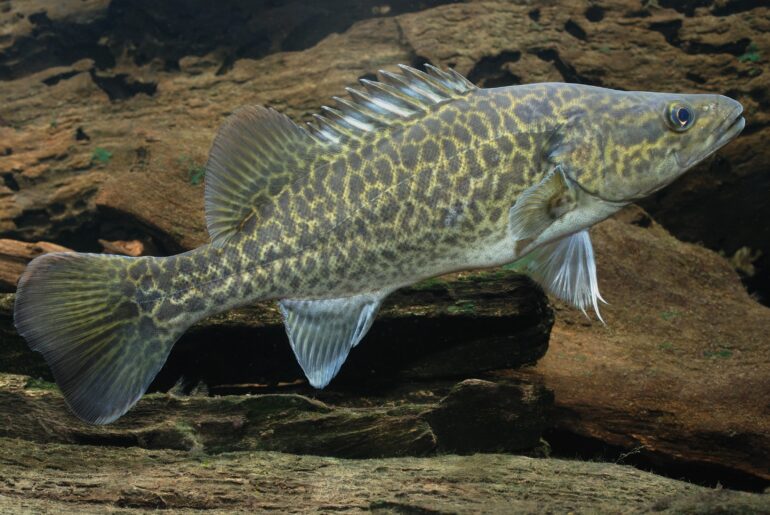The Gunbower and lower Loddon Native Fish Recovery Plan (the Plan) is an ambitious, long term plan being implemented by the North Central Catchment Management Authority (CMA) that aims to increase native fish populations and improve river health in over 200km of streams and wetlands in the Torrumbarry Irrigation Area. The Plan takes a different philosophical approach to most river restoration plans – instead of trying to restore streams to their natural state, it recognises the opportunities to increase native fish populations within an existing vibrant and productive agricultural setting. Because the system contains two anabranches of the Murray River, water can be used for environmental flows to reconnect or maintain habitats, stabilise stream hydrographs to prevent nest abandonment or stimulate spawning migrations of key species, and then be returned to the Murray River further downstream. That is, every drop can be used twice!
Along with delivering environmental flows, restoring connectivity through fishways and improving fish habitat, a critical aspect of the Plan is addressing the loss of fish into irrigation channels. When adult, juvenile, or larval fish passively move from natural streams into irrigation channels (generally via a regulator with a flume gate that does not allow for return passage to the stream) they are effectively lost from the breeding population. Irrigation channels usually offer little habitat complexity to support large fish populations, and many are drained over the winter period, leaving fish to die or become stranded in isolated refuge pools, and subjected to intense competition or predation pressures. While this issue has been well recognised in other parts of the world such as Europe and the USA, scientists have only recently investigated the magnitude of the problem in streams of the Murray-Darling Basin.

Initial work by the Victorian Arthur Rylah Institute for Environmental Research highlighted the extent of the problem in the Murray Valley and Torrumbarry Irrigation areas. In electrofishing surveys of 59 irrigation channel sites, over 10,000 fish from 10 native species were collected. Of particular concern for recreational anglers, these included numerous Murray cod, generally entering channels as juveniles, and Golden perch, which appeared to be entering channels predominantly as adults.
Larval fish surveys also indicated that drifting larvae and eggs of Murray cod, silver perch and golden perch from rivers and streams also entered into the channels. In a tagging project undertaken in Gunbower Creek, 20% of tagged young-of-year and adult golden perch were found to enter an irrigation channel, with none recorded to return. A population viability modelling study also assessed the impact of larval Murray cod loss into irrigation channels. The results indicated the impact could be severe, especially when combined with the impact of recreational fishing.

Fish loss to irrigation channels is a global issue, but there are well established solutions. In the USA and Europe, screens are used to limit fish movement into channels, hydroelectric power stations and pump houses. In some cases, legislation requires it, which has resulted in innovation of many designs for different sizes of fish and differing situations. Screens can take a variety of forms including vertical screens, rotating drum screens, travelling belt screens or pump screens. The appropriateness of a particular design depends largely on the target species, the expected volume of flow, the shape (and nature) of the diversion system and maintenance requirements. The use of innovative screens can be a win-win situation for irrigators and native fisheries, as they can minimise the entrainment of woody debris and sediment which can cause problems for pumping, while protecting native fish.

In Australia, NSW DPI Fisheries has recently assessed screen design criteria, including the screen material and appropriate approach velocities (i.e. velocity in front of the screen face) for local fish species using both lab and field based experiments. These studies determined that the material was not as important as approach velocities, and that perforated plate material, which is cost-effective and used commonly used elsewhere in the world, was suitable for the trialled species (golden and silver perch). They recommended a conservative approach velocity of 0.1m/s (measured 8cm from the screen) should be adopted until further trials on other native species are carried out.
Monitoring and research undertaken by the North Central CMA over the past 10 years has demonstrated that, although diverse, the native fish population is low in abundance. With implementation of the Gunbower and lower Loddon Native Fish Recovery Plan, there is high potential for native fish recovery, providing a great opportunity to test pilot applications of irrigation screen designs. Further work is needed to quantify the losses of native fish to the four major irrigation offtakes within the area (Channels No. 1, 2 (Macorna), 3 and 4) which may all need screening if assessment shows there are significant losses of native fish. Following this, pilot designs will be implemented at one or two irrigation offtakes and evaluated for effectiveness in preventing losses of all life stages of native fish to the irrigation channels. By keeping native fish in the streams and part of the breeding population, irrigation screens can help achieve a sustainable native fishery for the Lower Loddon and Gunbower system.
More information about the Native Fish Recovery Plan can be found at:
Native Fish Recovery Plan
Related stories:
Queensland’s Dewfish Reach installs irrigation screens to save our native fish
Weeding out a big problem: pump screens save fish while reducing choking weeds



